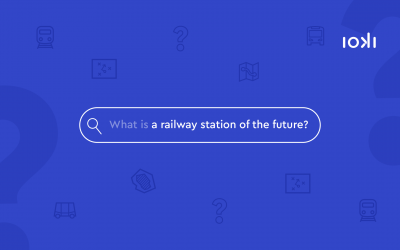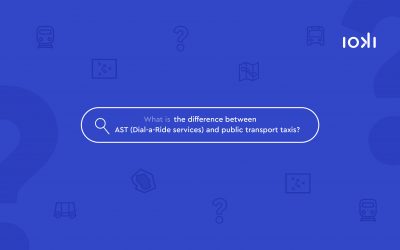Status quo in public transport – digitisation is taking hold
Getting from A to B comfortably, without having to use your own car, that is the challenge when it comes to transporting people efficiently. In the transport market, however, we still encounter some inefficiencies and a product that has remained unaltered since 1895: the bus. The public transport system is only being utilized by 22%, buses stop at fixed stops, travel according to fixed routes and timetables – capacities are maintained for expected use and make public transport anything but efficient. But applications, wifi in the vehicles, contactless payment and the digital ticketing system are also becoming more and more common in local public transport. Digitalisation can not only simplify life for passengers and end customers, but also for transport companies and mobility providers themselves. Because where planning is currently still done with pen and paper, a digital platform running in the background can optimise work and save costs – digitisation on all levels.
Mobility analyses as a basis for area and line traffic
However, this digitalisation of mobility services is not about cannibalisation or competition with existing public transport services, but about optimising one’s own existing product – in other words, increasing efficiency. When is which measure useful and above all where? As soon as a new transport system is planned or the existing one is to be digitalised, a data-based mobility analysis is the ideal basis for implementing efficient transport. Because only by comparing key figures on economic efficiency and attractiveness for customers, an analytical evaluation of the advantages and disadvantages of area and line traffic for efficiency can be made.
The digitalisation of current traffic and its planning, disposition and execution leads therefore to a noticeable increase in efficiency: On-demand solutions increase the effectiveness of existing traffic systems in every respect and can be integrated into public transport profitably, smoothly and sustainably through the intelligent distribution of existing resources. The digitalisation of the system enables an optimal match between supply and demand, thus saving not only resources but also costs.
The future is digital – also in local public transport
More flexible and digital structures can lead to qualitative improvement and cost savings, because data-based on-demand transport makes public transport even more demand-oriented and allows to bring adapted mobility solutions on the road. This way, even a tested product, such as the classic regular bus can be profitably adapted, modernised and optimised for the digital age.



